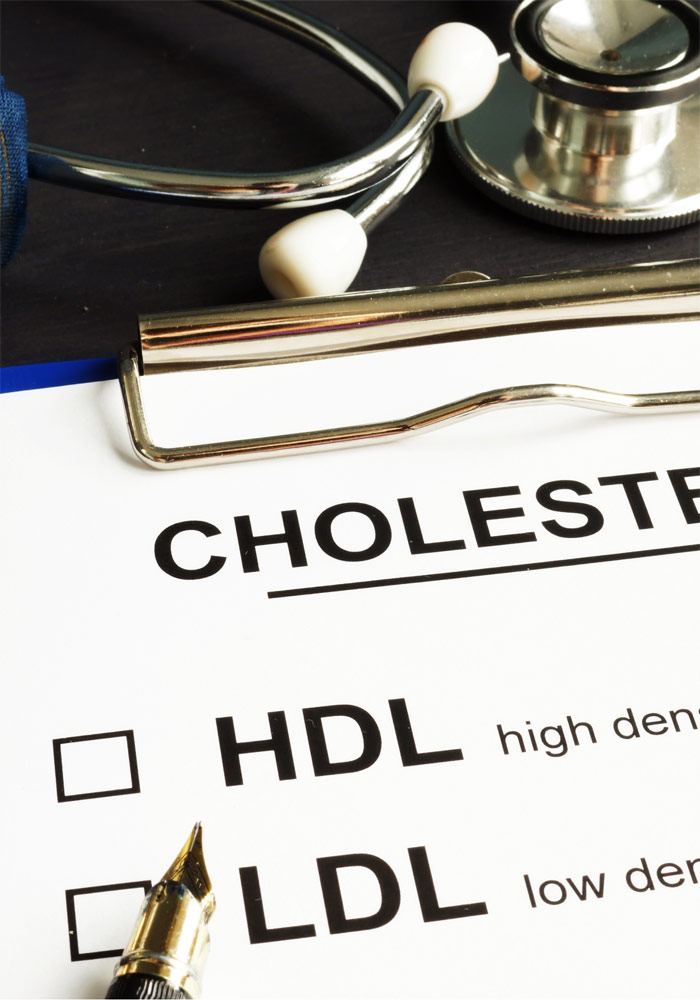DYSLIPIDEMIA

DYSLIPIDEMIA
Lipoproteins are transporters of lipids for the purpose of energy production, storage, production of steroid hormones and of bile acids. Lipoproteins consist of esterified and non-cholesterol (produced in the liver, brain, intestine), triglycerides (TG), phospholipids and apolipoproteins.
The following lipoproteins are recognized in the peripheral blood:
- chylomicrons, very low density lipoprotein (VLDL)
- low density lipoprotein (LDL)
- lipoprotein intermediate density (IDL)
- lipoprotein-a [Lp(a)] and
- high density lipoprotein (HDL)
LDL’s main role is to transport cholesterol to the tissues, HDL’s to remove cholesterol from the tissues, while VLDL’s to transport triglycerides.
Disorders ocholesterol and lipid levels in blood are called dyslipidemias. The various types of dyslipidemias eventually contribute to the development of atherosclerotic plaques on the wall of the arteries, reducing their lumen area or completely blocking the flow within them. This phenomenon may occur anywhere in the arterial tree but is more important when it comes to the arteries that supply blood to the myocardium (coronary arteries) or the arteries that supply blood to the brain (eg carotid arteries).
Dyslipidemias may be due to genetic factors, but may also be due to a number of other conditions such as diabetes, hypothyroidism, nephrotic syndrome, alcohol abuse, obesity, and Cushing’s syndrome.
Interventions to treat dyslipidemias include both hygienic and dietary measures such as immediate and permanent cessation of smoking, physical exercise, balanced diet and pharmaceutical means. Today, LDL is practically the only therapeutic target (reduced levels are sought). Levels for initiating treatment and therapeutic goals depend on the estimated ten-year risk of adverse cardiovascular events according to which patients are classified into different categories. This risk is assessed by the cardiologist and re-evaluated regularly.
Lipoprotein-α [Lp(a)] is a molecule similar to LDL but with a different apolipoprotein. It is pathophysiologically realted with the development of vascular disease and aortic stenosis, but to date intervention at its levels has not shown a reversal of cardiovascular risk. Its levels are stable throughout life and are determined by genetic factors. Levels >50 mg/dl are considered to be associated with increased risk.
Therapeutic interventions typically include drugs called statins as monotherapy or in combination with ezetimibe, a cholesterol absorption inhibitor. Statins beyond lowering lipid levels also feautre other beneficial effects, the so-called pleiotropic anti-inflammatory and antioxidant effects. For cases of very high cardiovascular risk, in which the treatment goal cannot be achieved under statin and ezetimibe only, there is the option to administer monoclonal antibodies in injectable form (PCSK-9 inhibitors). In the case of pregnant patients the only drugs allowed are bile acid blockers, as they are not absorbed into systemic circulation.
